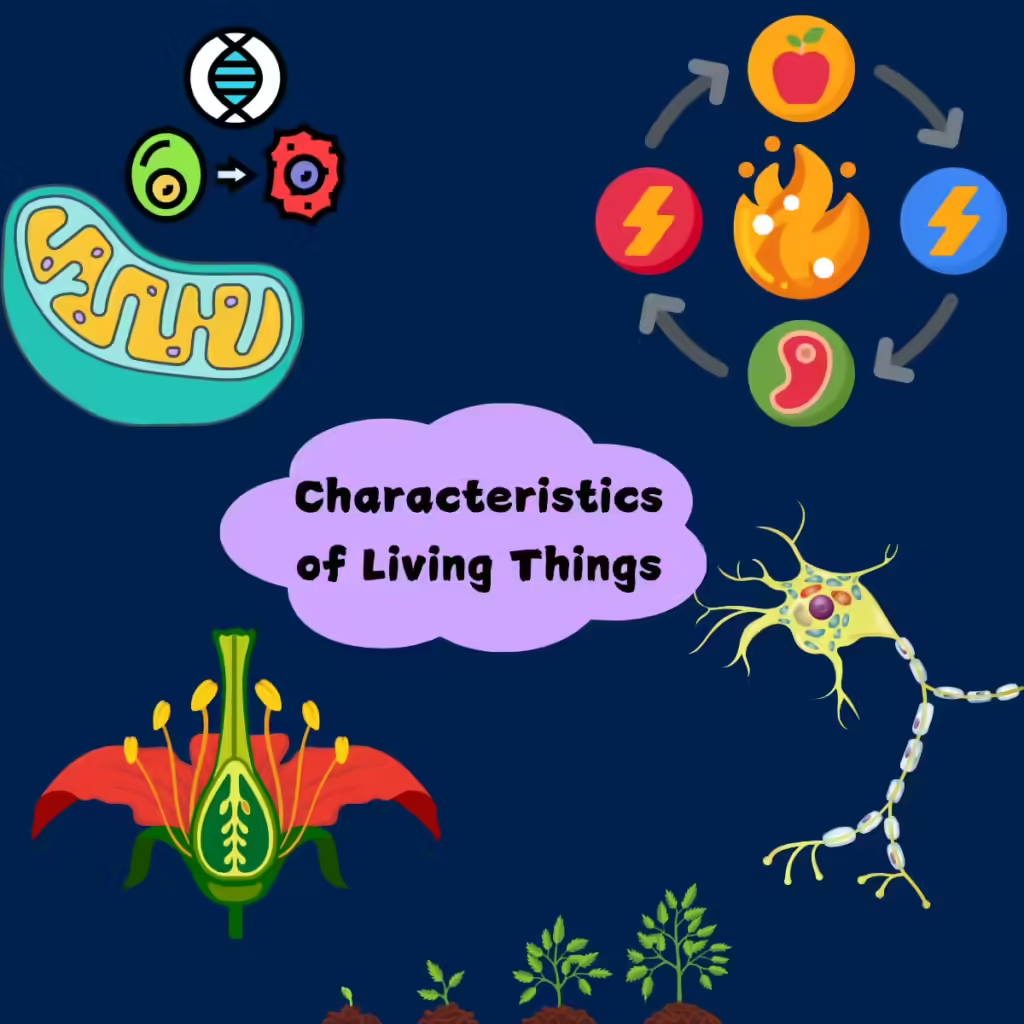
Are Flowers Alive? A Scientific Analysis of Their Cellular, Metabolic, and Developmental Properties
Shoumya Chowdhury
Yes, flowers are alive. They exhibit key characteristics of living organisms, including:
- Cellular structure composed of various specialized cells
- Metabolic processes like photosynthesis and respiration
- Growth and development from seed to mature flower
- Sexual reproduction through pollination and fertilization
- Response to stimuli such as light, gravity, and touch
- Adaptations for survival, like colorful petals to attract pollinators
Flowers are classified as angiosperms in the plant kingdom and play a vital role in the life cycle of flowering plants.
Characteristics of Living Things
All living things share certain characteristics that distinguish them from non-living objects. These characteristics include:
- Cellular structure: Living organisms are made up of one or more cells, which are the basic units of life. Cells contain organelles that perform specific functions to maintain life processes.
- Metabolism: Living things carry out a series of chemical reactions called metabolism to obtain energy from their environment and maintain their biological processes. This includes the breakdown of nutrients (catabolism) and the synthesis of new molecules (anabolism).
- Growth and development: Living organisms grow and develop throughout their life cycle. They start as smaller, simpler forms and gradually increase in size and complexity as they mature.
- Reproduction: Living things can reproduce, creating new individuals of the same species. Reproduction can be sexual (involving the fusion of male and female gametes) or asexual (involving a single parent).
- Response to stimuli: Living organisms can detect and respond to changes in their internal or external environment. This ability allows them to maintain homeostasis and adapt to their surroundings.
- Adaptation: Over time, living things can evolve and adapt to their environment through the process of natural selection. This results in the development of specific traits that help them survive and reproduce in their particular habitat.

These characteristics are essential for an organism to be considered alive, and they apply to all living things, from simple bacteria to complex animals and plants, including flowers.
Flowers as Living Organisms
Flowers are indeed living organisms, as they exhibit all the characteristics of life mentioned above. Let’s examine how flowers fulfill each of these criteria:
Cellular structure of flowers
Flowers are composed of various types of cells, each with specific functions:
- Parenchyma cells: These cells make up the majority of the flower’s tissues and are responsible for storage, photosynthesis, and support.
- Collenchyma cells: These cells provide structural support to the flower, particularly in areas of growth.
- Sclerenchyma cells: These cells have thick walls and provide mechanical support to the flower.
- Vascular cells: These cells form the xylem and phloem tissues, which transport water, nutrients, and sugars throughout the flower.
Metabolic processes in flowers
Flowers carry out various metabolic processes to maintain their life functions:
- Photosynthesis: Flowers contain chloroplasts in their green parts (sepals and sometimes petals), allowing them to produce glucose from sunlight, water, and carbon dioxide.
- Respiration: Flowers break down glucose to release energy for growth, development, and other life processes.
- Transpiration: Flowers release water vapor through tiny pores called stomata, which helps regulate temperature and nutrient transport.
Growth and development of flowers
Flowers develop from specialized structures called floral meristems. As the flower grows, it undergoes differentiation, forming the various parts of the flower, such as sepals, petals, stamens, and carpels. Hormones and environmental factors, such as temperature and light, control a flower’s development.
Reproduction in flowering plants
Flowers are the reproductive structures of angiosperms (flowering plants). They contain the male and female reproductive parts:
- Stamen (male): Produces pollen grains containing male gametes.
- Carpel (female): Contains the ovary, which houses the ovules containing female gametes.
Pollination occurs when pollen is transferred from the stamen to the carpel, either by wind, water, or animals. After pollination, fertilization takes place, leading to the development of seeds and fruit.
Flowers’ responses to stimuli
Flowers can respond to various stimuli in their environment:
- Light: Many flowers exhibit phototropism, growing towards the light source to maximize photosynthesis.
- Gravity: Flowers display gravitropism, growing against the force of gravity to ensure proper orientation.
- Touch: Some flowers, like the Venus flytrap, can respond to touch by closing their petals to trap insects.
- Temperature: Flowers can sense changes in temperature and adjust their growth and development accordingly.
Adaptations in flowers
Flowers have evolved various adaptations to ensure their survival and reproductive success:
- Colorful petals: Bright colors attract pollinators, such as bees and butterflies, ensuring pollination and genetic diversity.
- Scent: Many flowers produce unique fragrances to attract specific pollinators.
- Nectar: Flowers secrete sugary nectar as a reward for pollinators, encouraging them to visit and transfer pollen.
- Structural adaptations: Some flowers have specialized shapes or structures that facilitate pollination by specific animals, such as long, tubular flowers for hummingbirds or broad, flat flowers for beetles.
These adaptations demonstrate that flowers have evolved over time to optimize their survival and reproduction, a key characteristic of living organisms.
Common Misconceptions
Despite the evidence that flowers are living organisms, there are some common misconceptions about their life status:
Flowers as static decorations
Many people view flowers primarily as decorative objects, appreciating their beauty without considering their biological functions. This perception may lead to the belief that flowers are not truly alive, but rather static ornaments.
Cut flowers and their life status
When flowers are cut from the plant and placed in a vase, they can still carry out some life processes for a short time, such as taking up water and maintaining cell turgor. However, without the support of the parent plant, cut flowers eventually wilt and die. This may contribute to the misconception that flowers are not alive, as they do not exhibit all life processes independently.
The Life Cycle of Flowers
To better understand flowers as living organisms, it is helpful to examine their life cycle, which consists of several stages:
Seed germination
The life of a flower begins with the germination of a seed. When conditions are favorable (adequate moisture, temperature, and oxygen), the seed absorbs water and begins to grow. The embryo inside the seed develops into a seedling, which emerges from the seed coat.
Vegetative growth
After germination, the seedling enters a period of vegetative growth. During this stage, the plant focuses on producing leaves, stems, and roots to support its growth and prepare for reproduction. The duration of vegetative growth varies among species and is influenced by environmental factors such as temperature, light, and nutrient availability.
Flowering stage
Once the plant has accumulated sufficient resources, it enters the reproductive phase, known as the flowering stage. Hormonal changes within the plant trigger the development of flower buds, which eventually open to reveal the mature flower. The timing of flowering is often influenced by environmental cues, such as day length (photoperiodism) or temperature.
Pollination and fertilization
With the flower fully open, pollination can occur. Pollen grains are transferred from the male part of the flower (stamen) to the female part (carpel) either by wind, water, or animal pollinators. When a pollen grain lands on the receptive surface of the carpel (stigma), it germinates and grows a pollen tube down to the ovary. Fertilization occurs when the male gamete from the pollen grain fuses with the female gamete (ovum) in the ovule, forming a zygote.
Seed production
After fertilization, the ovule develops into a seed, and the ovary surrounding it matures into a fruit. The seed contains the embryo, which is the new plant in its dormant state, along with a food source (endosperm) to support its growth upon germination. The fruit serves to protect the seed and aid in its dispersal.
Senescence
Following seed production, the flower enters a stage of senescence, characterized by the gradual deterioration and death of the floral tissues. The petals, sepals, and other parts of the flower wilt and fall off, while the fruit and seeds continue to develop. Once the seeds are mature and dispersed, the life cycle of the flower is complete, and the process begins anew with the germination of the next generation of seeds.
Scientific Classification
Flowers are part of the plant kingdom and belong to a specific group of plants called angiosperms:
Kingdom Plantae
All plants, including flowers, are classified under the kingdom Plantae. This kingdom encompasses organisms that are eukaryotic, multicellular, and capable of photosynthesis. Plants have cell walls made of cellulose and obtain their energy primarily from sunlight.
Angiosperms (flowering plants)
Within the plant kingdom, flowers are further classified as angiosperms, which is a diverse group of plants that produce flowers and bear their seeds in fruits. Angiosperms are the most abundant and diverse group of land plants, with over 300,000 known species. They are distinguished from other plant groups by several characteristics:
- Presence of flowers: Angiosperms are the only plants that produce flowers as reproductive structures.
- Enclosed seeds: Angiosperm seeds are enclosed within an ovary, which develops into a fruit.
- Vascular tissue: Angiosperms have a well-developed vascular system with xylem and phloem tissues for efficient transport of water, nutrients, and sugars.
- Double fertilization: Angiosperms undergo a unique process called double fertilization, where one sperm cell fuses with the egg to form the zygote, and another sperm cell fuses with two polar nuclei to form the endosperm, which provides nutrition for the developing embryo.
The plant kingdom’s classification of flowers as angiosperms highlights their unique characteristics and evolutionary adaptations, further supporting their status as living organisms.
Wrapping Up
The evidence overwhelmingly supports the fact that flowers are indeed living organisms. They exhibit all the characteristics of life, including cellular structure, metabolism, growth and development, reproduction, response to stimuli, and adaptation. Flowers play a crucial role in the life cycle of angiosperms, serving as the reproductive structures that ensure the survival and propagation of the species.

Shoumya Chowdhury
Blogger and Web Developer
Shoumya Chowdhury, an EEE graduate from CUET, is currently working as a web developer. Apart from his career, Shoumya is enthusiastic about blogging, sharing well-researched content on diverse topics. He is committed to providing authentic information and values the opportunity to engage with readers through his writing.
Comments
No comments yet.



